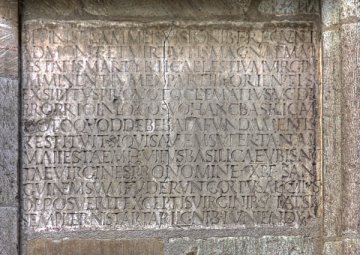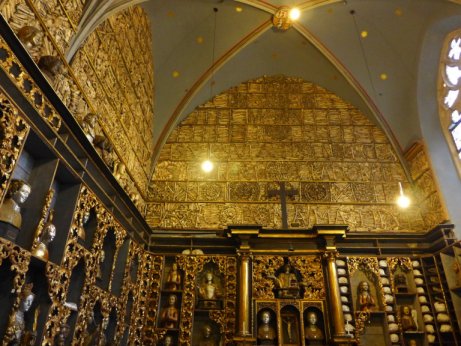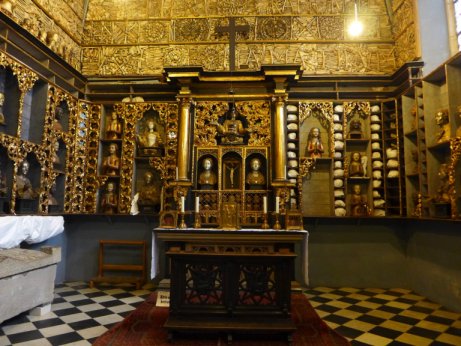|
The Legend of St. Ursula and the 11,000 virgins |
|
|
|
|
|
Well, probably not, but hunting for historical truth in the legend is actually the least interesting aspect of it. We don't enjoy Creation myths, or stories of Greek Gods, or King Arthur, or Robin Hood any the less because the incidents described never happened. The most solid evidence linking slaughtered virgins with Cologne is this inscription, to be found in the Basilica of St Ursula in Cologne. It's date has been argued over endlessly, but it may date from the 4th century. The Latin has had scholars scratching their heads. The general view is that it tells us of one Clematius who, as a result of visions, rebuilt a ruined basilica in Cologne that has been built in honour of virgins who had been slaughtered in that place. |
|
|
|
|
|
In the twelth century a cemetery was found not far
from the church, which, somewhat inevitably, was declared to be
the resting place of Ursula and the virgins, despite the fact that there
were remains of men and children, and even animals. The men could be
explained away - the virgins had followers with them, after all - but
the presence of children is somewhat problematic. One ingenious solution
was that they were 'distant relatives' of the virgins, but an explanation
as to what they were doing there was not forthcoming. Nevertheless, the bones were all dug up and exhibited, and, to put it cynically, provided a huge boost to the Cologne relic trade. |
|
|
Why 11,000?
How did that number 11,000 come about? The Catholic Encyclopaedia
comes up with this explanation: |
|
|
Update: March 2015 Our first trip to Cologne, and a visit to the Basilica of St Ursula was high on the agenda. Luckily for us, the 'Golden Chamber' was open for visitors at the very reasonable price of three euros a head, and photography was permitted! the sight of all those bones made us wonder whether there might have been 11,000 of them after all! |
|
|
|
|
|
|
|
|
St Ursula - page1 On to the pictures Home page - explore the site |
|



